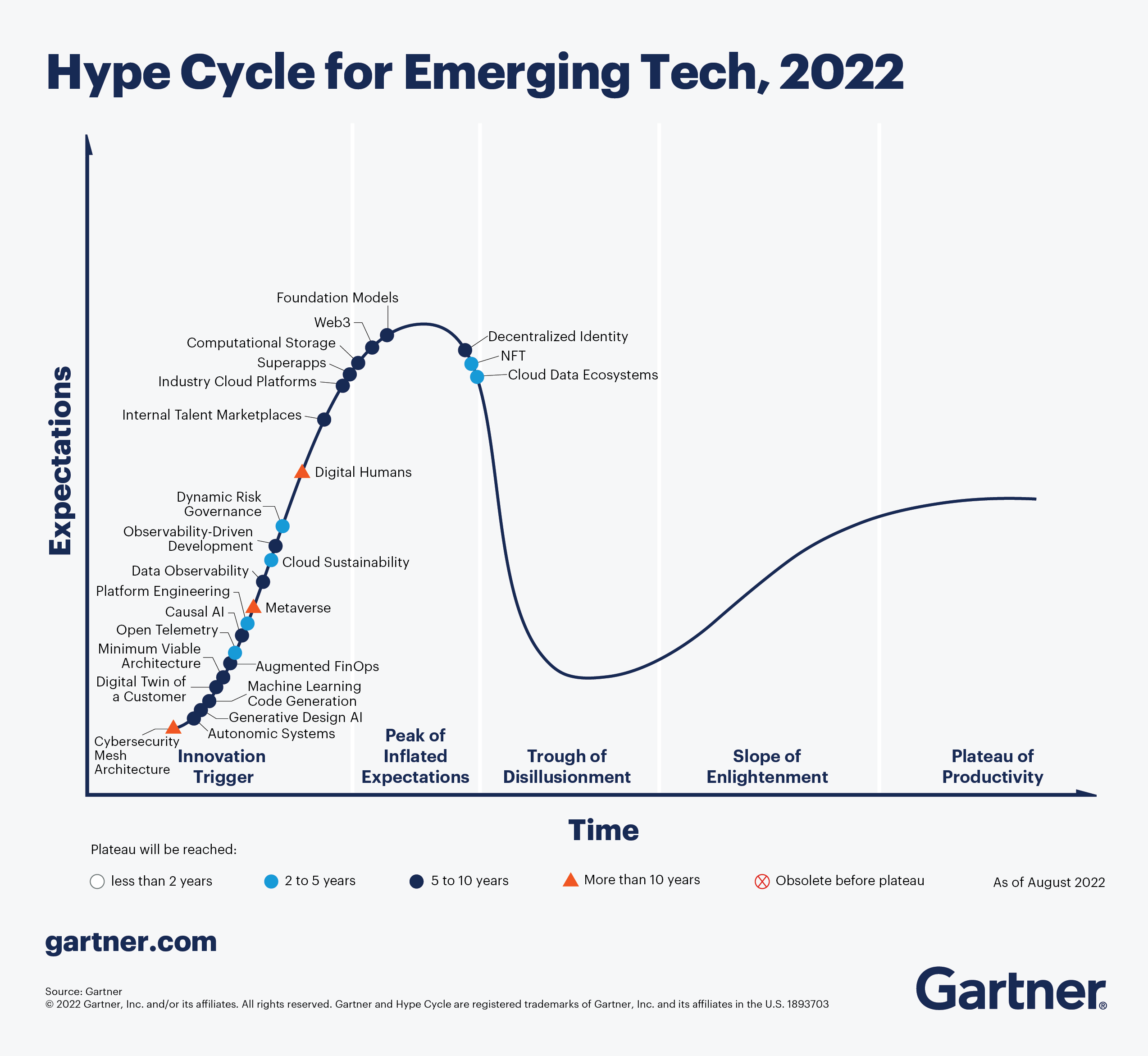25 emerging tech trends to watch

GettyImages/ Andriy Onufriyenko
The selected technologies in the 2022 Gartner Hype Cycle feature immersive tech, accelerated AI and innovation around how products and services are built.
Expanded immersive experiences, accelerated artificial intelligence and optimized technologist delivery are the three themes covering the products and services in the 2022 Gartner Hype Cycle for emerging technologies.
Gartner charted 25 technologies it expects will have significant business and social impact in the next 10 years and help IT leaders to deliver on digital business transformation.
The technologies’ development is plotted along a bell curve that indicates how a technology’s expectations (the Y axis) change over time (the X axis) from its inception to acceptance. The hype stages start with the innovation trigger, leading to the peak of inflated expectations, then to the trough of disillusionment and finally the slope of enlightenment and the plateau of productivity. Nearly all the 25 technologies are still in the first two stages, according to this year’s graph.

Gartner sees the theme of evolving and expanding immersive experiences playing out in digital twins, virtual venues and cryptocurrencies. A digital twin of a customer or user that can emulate and anticipate client behavior can help organizations improve customer experience and support other digital products and services.
Other technologies enabling immersive experiences include decentralized identity, in which users can control their identities through digital wallets or blockchain applications. Digital or virtual humans, non-fungible tokens and the metaverse fall under this theme as do internal talent marketplaces, which match employees to projects with no human involvement. The Web3 technology stack will be essential for the developing decentralized web applications that allow users to control their own identity and data.
The second theme of accelerated AI can be seen in autonomic systems, which are self-managing physical or software systems that have autonomy, agency and the ability to learn. Between five and 10 years away, autonomic systems “will be transformational to organizations,” Gartner said. Examples of such technologies include causal AI that understands cause-and-effect relationships, machine learning-based code generation tools and AI-augmented design that uses AI for user flows, designs and content and presentation layers.
Gartner’s third theme, optimized technologist delivery, refers to the product or service builder communities and the platforms they use. Cloud data ecosystems, for example, provide an environment that supports a range of data workloads, streamlined delivery and straightforward functionality. Some of the technologies in this category include AI-augmented FinOps and cloud services that deliver sustainability benefits within economic, environmental and social systems. Another emerging technology under this theme is data observability, the ability to understand the health of an organization’s data ecosystem by continuously monitoring, tracking, alerting, analyzing and troubleshooting incidents.
According to the chart, decentralized identity, NFTs and cloud data ecosystems are the furthest along. The technologies more than 10 years from productivity include cybersecurity mesh architecture, the metaverse and digital humans.
“All these technologies are at an early stage, but some are at an embryonic stage, and great uncertainty exists about how they will evolve,” said Melissa Davis, VP analyst at Gartner. “The embryonic technologies present greater risks for deployment but potentially greater benefits for early adopters.”
